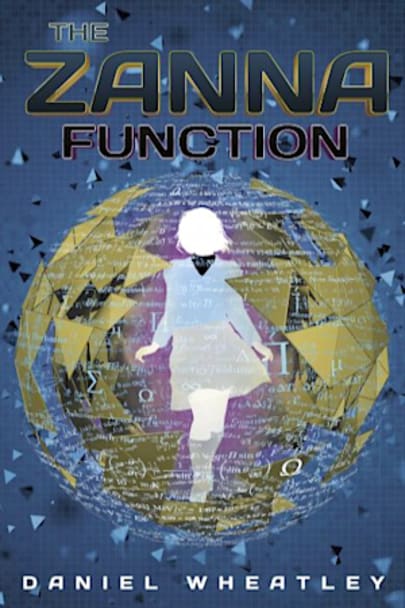When fourteen-year-old Zanna Mayfield gets an acceptance letter from St. Pommeroy’s School for Gifted Children, she jumps at the chance to put her considerable intellect to good use. But nothing can prepare her for the first day, when she discovers that she is a Scientist –one able to see and bend the basic functions of the universe like velocity, gravity, and chemical reactions to her own … purposes. As Zanna struggles to make friends and learn how to use her abilities at her new school, her troubles multiply when a mysterious woman begins stalking her, dead set on keeping Zanna out of St. Pommeroy’s. If Zanna has any hope of finishing her first year, she’ll need to master every function she can get her mind around–including the one that defines Zanna herself.
more



I am a huge fan of world-within-the-world (or -behind-the-world) books, in which self-described “average” or “outsider” characters who have always felt lost suddenly find out that the world is much bigger/different/stranger than everyone realized and that their outsider status in the *real* world was due to their exceptional positioning in the bigger/different/stranger world. When I started reading this, I sort of thought I’d be in for the usual ride on that train – then things rapidly got even bigger/more different/vastly stranger, and that’s when I was completely hooked…
The Zanna Function is a fascinating sideways trip into a world of science that is more magical than most worlds of magic. There are truly unique elements (pun intended) at play here, and their intermingling with scientific principles and phenomena make for a very original and highly entertaining read. Zanna herself is a fascinating character. This is, in many ways, a personal growth tale as much as anything (as most YA stories tend to be), and while Zanna may doubt how much growing she’s done throughout the course of this book (which, although not labeled as such, quite clearly felt like a Book One to me), I as a reader feel that it was both significant and a signal of even greater things to come. But the book didn’t read like a lesson in growing up. It read like a tale of the frustration every one of us has felt when we’ve stumbled up against something bigger than ourselves that doesn’t make sense or fit into our worldview, and that requires us to contemplate not only our own position in the world but also our own position within ourselves. (Sorry if that sounds oblique, but it is a heartfelt obliquity, and one that I’ve been thinking about quite a bit both throughout my read and afterwards.) There is, as again I find so often in YA novels, MUCH more going on here behind the scenes than a casual read might suggest, and that’s where I think this novel really stands out for me. I found myself thoroughly engaged throughout the story, flipping pages as I wondered what on earth would happen next. I expect that in a well-written adventurous tale about worlds within worlds. What I don’t expect, and what I was delighted to find, was myself equally engaged in thinking through many of the Self lessons that Zanna and her friends encountered, both at St. Pommeroy’s and in the course of their travails with The Variable.
“A pile of rubble is stronger than a house, only because it cannot collapse again. One cannot be destroyed if she never rebuilds.”
Read that one again – it’s worth it. Then stop and think about what that says, and the depth and breadth of what it means. Then remind yourself you’re reading YA fiction, not self-help or non-fiction or philosophy. Rather, you’re reading a back-and-forth between Zanna and a teacher, handled bedside, after a rather seismic event in the course of the novel – and realize that it felt entirely organic to the story and the characters and not at all like self-help or non-fiction or philosophy injected into the midst of a magico-scientific (I don’t know how else to describe it) story. The writing was strong and clear and the images burst of the pages. You can find that in stories like this one easily enough, if you look. But what you don’t often find is that kind of self-reflection – and especially not positioned in such a way that it leaves the reader, not just the characters, contemplating its ramifications long after the “words” are uttered…
Then there’s The Variable herself – and if there’s a more fascinating villain this side of Voldemort, I am not sure if I can describe him/her/it. There is delicious evil here – and in the manner of all truly delicious evil, it’s not ubiquitous, but rather couched in concern and humanity and a sense that maybe, just maybe, it’s all a big misunderstanding and she’s not *really* evil after all… Then things take several sharp left-right-back left again turns, and villain once again seems to be the operative term. But then again… Sound confusing? It is, in the best possible, mind-bending way. And it’s all wrapped up in Zanna herSelf (capitalization intended), and that’s where the delightful mysterious bizarreness really takes it’s best turn – and where I seriously hope a sequel (or two) will come in!
This was a magnificent find and a great read. My review copy was provided by NetGalley. The book releases in the U.S. on March 10, 2018.